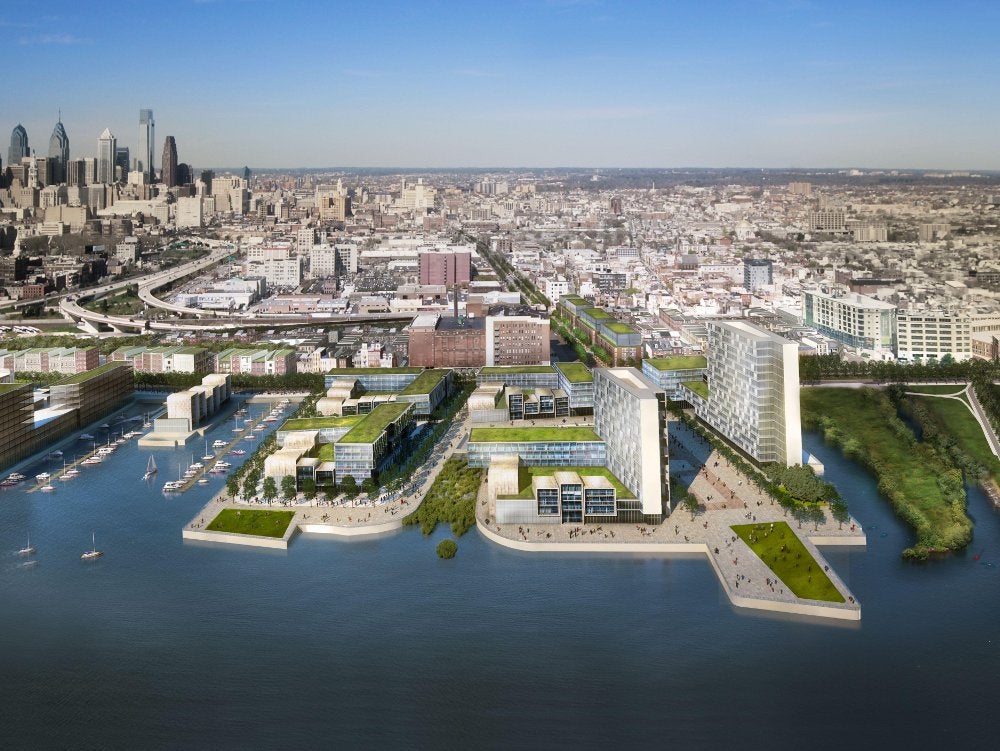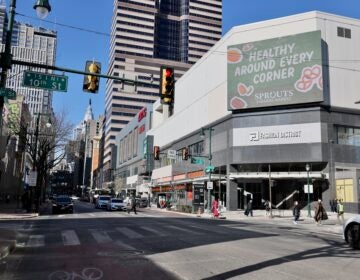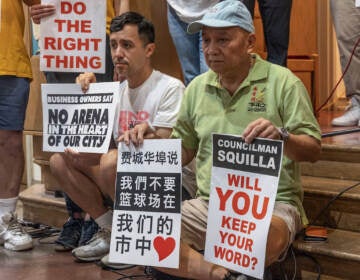Central Delaware Overlay passes city council

After more than two years of talks between First District Councilman Mark Squilla, planners, developers, landowners and waterfront advocates, City Council has passed a zoning ordinance designed to shape future development along the Central Delaware according to the city’s long-range plan for that waterfront.
For a little taste of how arduous the process has been, consider that Squilla first introduced a bill to create this overlay in May of last year. There wasn’t enough time left in the session for council to vote on it. And then discussions resumed again, with Squilla introducing a new bill in April.
The overlay applies to most properties between Oregon and Allegheny avenues, and the pier head of the Delaware River and the east side of I-95. (Parcels zoned Port Industrial or for casinos are exempt.)
Better connecting city neighborhoods to the riverfront with an extended street grid is a key principle of the Central Delaware Master Plan, which was adopted by the Philadelphia City Planning Commission.
The ordinance designates Dickinson, Christian, Race, Callowhill, and Spring Garden streets and Washington, Frankford and Columbia avenues as River Access Streets, and prohibits the building of permanent structures that would block a continuance of those streets to the river.
The overlay requires active uses on ground floor frontages, and that 40 percent of riverfront parcels greater than 5,000 square be kept as open area.
It limits building height to 100 feet, but developers could earn the right to build up to 244 feet in exchange for providing certain public amenities, such as constructing a segment of waterfront trail or building to LEED standards.
The Delaware River Waterfront Corporation is the quasi-city agency that manages city-owned riverfront property, oversaw the development of the master plan, and participated in the overlay discussions hosted by Squilla.
DRWC Planner/Project Manager Karen Thompson said the organization is very pleased with the council vote.
“The way we’ve looked at it, it’s kind of the third part that we needed,” she said. “The Planning Commission adopted the master plan, the waterfront setback was put into place, and this is that third piece that we needed to be able to really move forward.”
The waterfront setback Thompson refers to is another key principle of the master plan. Its purpose is to protect the river environment, help with storm water management and provide space for a waterfront trail where possible. Advocates originally called for a 100-foot setback. But the DRWC moved instead to 50-feet, with riverfront parks at regular intervals. The setback is not contained within the overlay, but instead in separate legislation that applies to all riverfronts, city-wide.
Thompson said she is pleased with the height-bonus chart that makes up much of the text of the bill. It outlines specifically how developers can earn additional height, and those specifics are better than the old system under the interim overlay, where the planning commission could allow more height on a case-by-case basis, she said.
The one disappointment for DRWC: Berks Street isn’t among the list of River Access Streets.
While Thursday’s early morning Central Delaware Advocacy Group meeting took place before the council vote, members welcomed Chairman Matt Ruben’s reported that passage was eminent.
Ruben commented it felt a little odd that after so much work, one of CDAG’s biggest goals would be achieved. “It’s strange,” he said. “ We worked for so many years on this, and now it looks like we’re getting this.”
Squilla said Thursday afternoon that he was very happy the overlay passed, and was very grateful to everyone who participated in two years of talks to get to this point. The new zoning ordinance means that developers can now really understand what the master plan means for their properties and “gives them a guideline on how development should take place in the Central Delaware Overlay.”
Squilla said no one was completely happy with every provision, but the overlay is good legislation that allows the waterfront planning to move forward. “Am I going to say it will never change? No. Obviously, if something comes up, we may need to tweak it here and there. And is this going to stop every variance from ever happening? I can’t say that, either.”
The councilman re-iterated a promise he made at the Rules Committee hearing on the bill: He’s open to talking more if problems are identified.
Craig Schelter of the Development Workshop, a non-profit that represents the interests of developers and landowners and seeks to encourage development in Philadelphia, is going to hold him to the future talks.
The Development Workshop believes the overlay is far too ambitious, considering that much of the riverfront land is in private hands, and the size of the city’s capital budget.
North of Columbia, the costs of the public benefits required to earn additional height are too high, and development would be discouraged, he said. Schelter said the southern area is commercially active with the big box stores, and the overlay here should be tweaked to allow for the addition of more stores of that variety, since the model works.
Reached by email, Schelter said the overlay ” will protect those fearful of any development happening, and will discourage private investment in the Delaware waterfront.”
The Development Workshop supports the overlay as written for the area between Columbia and Washington, where the city owns much of the land.
Advocates have noted that the capital budget isn’t the only source of funds, as city money can be used to leverage grants and state and federal funding.
At CDAG, Ruben noted that another Central Delaware project – a big chunk of the Penn Street portion of the riverfront trail – will open with a 10:30 a.m. ribbon cutting ceremony Monday. While Schelter says there’s not enough money, the money keeps coming from somewhere, because things keep happening, Ruben noted.
The trail design and construction was paid for with a grant from the William Penn Foundation. All of the section that opens Monday is on public land. A future section is on SugarHouse’s property, however. The casino will pay for and construct that section, likely this fall.
WHYY is your source for fact-based, in-depth journalism and information. As a nonprofit organization, we rely on financial support from readers like you. Please give today.






